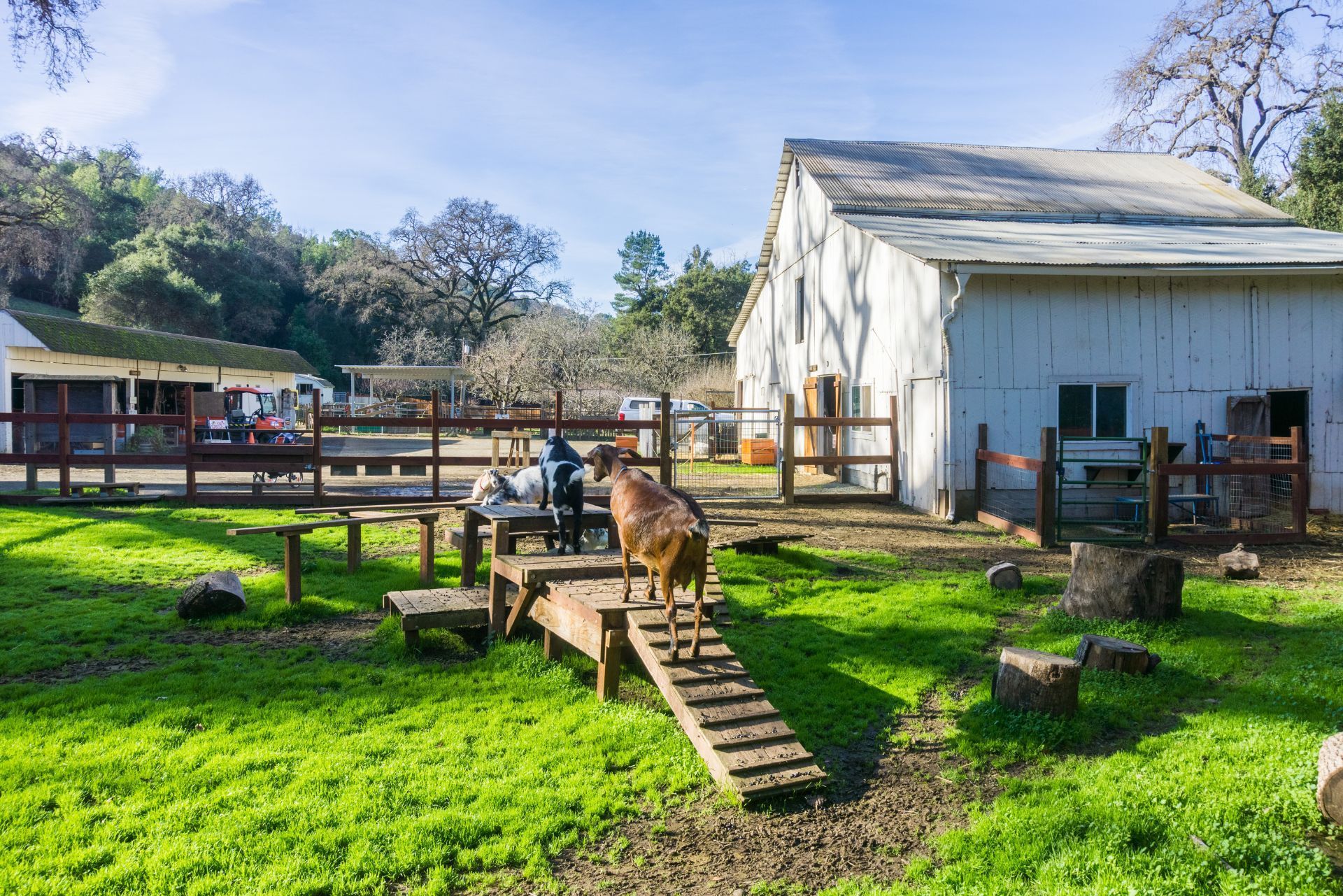
Top 3 Recommended Policies

Nebraska, known for its vast fields and agricultural heritage, is home to a significant number of farms and ranches. These operations are not just a way of life; they are also vital to the state's economy. However, with the rewards of farming and ranching come inherent risks. This is where Nebraska farm and ranch insurance comes into play. Understanding the ins and outs of this type of insurance is essential for anyone involved in agriculture in the Cornhusker State.
Understanding Farm and Ranch Insurance
Farm and ranch insurance is a specialized type of insurance designed to protect agricultural businesses from various risks. Unlike standard homeowners' insurance, this coverage is tailored to meet the unique needs of farmers and ranchers. It encompasses a wide range of protections, including property damage, liability, and loss of income.
What Does Farm and Ranch Insurance Cover?
The coverage provided by farm and ranch insurance can vary significantly based on the specific policy and the needs of the insured. Generally, it includes protection for buildings, equipment, livestock, and crops. Additionally, it may cover liability claims that arise from accidents on the property.
Farm and ranch insurance can also include coverage for loss of income due to unforeseen events, such as natural disasters. This aspect is particularly crucial as it helps farmers and ranchers maintain financial stability during challenging times. For instance, if a severe drought reduces crop yields, the insurance can provide the necessary funds to cover operational costs until the next harvest, ensuring that the farm can continue to function without significant financial strain.
Types of Coverage Available
There are several types of coverage options available under farm and ranch insurance. These can be broadly categorized into property coverage, liability coverage, and additional coverages. Property coverage protects physical assets, including barns, silos, and machinery. Liability coverage protects against claims resulting from injuries or damages that occur on the property.
Additional coverages may include crop insurance, livestock insurance, and equipment breakdown insurance. Each of these options serves a distinct purpose, allowing farmers and ranchers to customize their policies based on their specific needs. For example, crop insurance can safeguard against the financial impact of pests or diseases that threaten yield, while livestock insurance can provide compensation for the loss of animals due to theft or natural disasters. Furthermore, equipment breakdown insurance ensures that unexpected machinery failures do not halt operations, which could lead to costly delays in production and revenue loss.
Moreover, many insurance providers offer specialized endorsements that can be added to a policy, such as coverage for organic farming practices or agritourism activities. These endorsements reflect the evolving nature of agriculture and the diverse ways in which farmers and ranchers generate income today. As such, it is essential for agricultural business owners to work closely with their insurance agents to ensure that their policies comprehensively address their unique operational risks and financial goals.

Why Is Farm and Ranch Insurance Important?
Having the right insurance coverage is crucial for any farm or ranch operation. The agricultural sector is fraught with risks, from unpredictable weather patterns to market fluctuations. Insurance acts as a safety net, providing financial support in times of crisis.
Protection Against Natural Disasters
Nebraska is no stranger to severe weather events, including tornadoes, floods, and droughts. These natural disasters can wreak havoc on crops and livestock, leading to significant financial losses. Farm and ranch insurance can provide coverage for damages caused by these events, helping farmers recover and rebuild.
Moreover, having insurance in place can also facilitate quicker recovery processes. Farmers can focus on restoring their operations rather than worrying about the financial implications of a disaster. This is particularly crucial during the planting and harvesting seasons when every day counts. With the right coverage, farmers can also invest in preventive measures, such as better drainage systems or crop diversification, knowing they have a safety net in place.
Liability Protection
Liability claims can arise from various situations, such as accidents involving visitors or damage caused by farm equipment. Without adequate insurance, these claims can lead to substantial financial burdens. Farm and ranch insurance helps mitigate these risks by providing liability coverage, ensuring that farmers and ranchers are protected against potential lawsuits.
This aspect of coverage is essential for maintaining peace of mind, allowing farmers to focus on their operations without the constant fear of financial ruin due to unforeseen accidents. Additionally, many farms host events like tours, workshops, or community gatherings, which can increase the risk of liability claims. Having comprehensive liability coverage not only protects the farmer but also encourages community engagement and support, fostering a stronger relationship between the farm and its surrounding community.
Coverage for Equipment and Machinery
In addition to protecting crops and livestock, farm and ranch insurance often includes coverage for essential equipment and machinery. Agricultural operations rely heavily on tractors, harvesters, and other specialized tools, which can be costly to repair or replace. In the event of theft, vandalism, or mechanical failure, having the right insurance can ensure that farmers are not left scrambling to find the funds to replace critical equipment.
This coverage can also extend to newer technologies that are becoming increasingly important in modern agriculture, such as drones and precision farming tools. As these technologies become integral to efficient farming practices, ensuring they are covered under insurance policies is vital for maintaining productivity and competitiveness in the market. By safeguarding their investments in equipment, farmers can focus on innovation and sustainability, driving their operations forward even in challenging times.
Choosing the Right Insurance Provider
Selecting the right insurance provider is a critical step in securing adequate farm and ranch insurance. Not all insurance companies offer the same level of coverage or expertise in agricultural insurance. Therefore, it's essential to do thorough research before making a decision.
Evaluating Insurance Options
When evaluating insurance options, consider the specific needs of your farm or ranch. Assess the types of crops or livestock you manage, the size of your operation, and any unique risks you may face. This information will help you determine the type and amount of coverage needed.
Additionally, look for insurance providers that specialize in agricultural insurance. These companies typically have a better understanding of the unique challenges faced by farmers and ranchers and can offer tailored solutions. For instance, they may provide coverage for natural disasters, crop failures, or livestock diseases, which are critical considerations in the agricultural sector. Understanding the nuances of your operation can also lead to potential discounts or specialized packages that align with your specific needs.
Reading Reviews and Testimonials
Before committing to an insurance provider, take the time to read reviews and testimonials from other farmers and ranchers. Their experiences can provide valuable insights into the company's customer service, claims process, and overall reliability.
Online forums and local agricultural associations can also be excellent resources for gathering information about different insurance providers. Engaging with fellow farmers can help you make an informed decision. Additionally, consider reaching out to your local cooperative extension office, which often has resources and recommendations for reputable insurance companies. They can provide insights into which providers have a strong track record in your region and may even offer workshops or seminars on insurance options tailored for agricultural businesses. This community engagement can further enhance your understanding and confidence in selecting the right insurance provider.
The Claims Process
Understanding the claims process is crucial for any farm or ranch owner. In the event of a loss, knowing how to navigate the claims process can make a significant difference in the speed and efficiency of receiving compensation. The agricultural sector is often vulnerable to unpredictable events such as natural disasters, equipment failures, or livestock issues, making familiarity with the claims process not just beneficial but essential for financial stability.
Steps to File a Claim
Filing a claim typically involves several steps. First, it's essential to notify your insurance provider as soon as possible after the incident occurs. This prompt communication can help expedite the claims process. Next, gather all necessary documentation, including photographs of the damage, receipts for repairs, and any other relevant information. It's also wise to document the timeline of events leading up to the incident, as this can provide valuable context during the claims review.
Once you have compiled the necessary documentation, submit your claim to the insurance company. They will then review the information and may send an adjuster to assess the damage. After the assessment, the insurance company will determine the compensation amount based on the policy terms. Be prepared for follow-up questions from the adjuster, as they may require additional information to fully understand the extent of the loss and its impact on your operations. This proactive engagement can help ensure that your claim is processed efficiently.
Common Challenges in the Claims Process
While the claims process may seem straightforward, challenges can arise. Disputes over the extent of damages or the interpretation of policy terms can lead to delays. To mitigate these issues, it's advisable to maintain clear communication with your insurance provider and to have a thorough understanding of your policy's coverage limits and exclusions. Additionally, it can be beneficial to consult with an insurance agent who specializes in agricultural policies, as they can offer insights and guidance tailored to your specific situation.
Furthermore, keeping detailed records of your farming operations can help substantiate your claims and make the process smoother. Regularly updating your inventory lists, maintaining maintenance logs for equipment, and documenting crop yields can provide a comprehensive picture of your operations. In the event of a claim, these records serve as critical evidence to support your case, ensuring that you receive the compensation you deserve and minimizing the potential for disputes with your insurer.
Cost of Farm and Ranch Insurance
The cost of farm and ranch insurance can vary widely based on several factors, including the size of the operation, the types of coverage selected, and the location of the farm or ranch. Understanding these factors can help farmers and ranchers budget for their insurance needs. Additionally, the complexity of the agricultural business itself plays a significant role in determining the overall cost of insurance. For instance, a diversified operation that includes both crop and livestock production may require more comprehensive coverage than a single-crop farm, leading to variations in premiums.
Factors Influencing Insurance Premiums
Several factors influence insurance premiums, including the value of the property, the type of crops or livestock, and the overall risk profile of the operation. For instance, farms that grow high-value crops or raise livestock may face higher premiums due to the increased risk of loss. Moreover, the age and condition of the equipment used in the operation can also impact costs; older machinery may be more prone to breakdowns, which can lead to higher insurance claims.
Additionally, the location of the farm can affect premiums. Areas prone to natural disasters may see higher rates due to the increased likelihood of claims. Conversely, farms in regions with lower risk may enjoy more affordable premiums. Local regulations and the availability of emergency services can also play a role; farms located near fire departments or medical facilities might benefit from lower rates due to reduced response times in emergencies. Understanding the local environment and its implications on insurance can provide farmers with valuable insights into managing their costs effectively.
Ways to Reduce Insurance Costs
While insurance is a necessary expense, there are ways to reduce costs without sacrificing coverage. One effective strategy is to bundle insurance policies with the same provider. Many insurance companies offer discounts for bundling home, auto, and farm insurance. This not only simplifies the management of policies but can also lead to significant savings over time. Additionally, maintaining a good credit score and a clean claims history can further enhance a farmer's ability to negotiate better rates.
Implementing risk management practices can also lead to lower premiums. For example, investing in safety training for employees or upgrading equipment can reduce the likelihood of accidents, which may positively impact insurance rates. Moreover, regular maintenance of the property and equipment can help prevent losses and demonstrate to insurers that the operation is proactive in mitigating risks. Farmers might also consider participating in agricultural associations or programs that promote best practices in safety and risk management, as these can provide additional resources and potential discounts on insurance premiums.

Conclusion
Nebraska farm and ranch insurance is an essential component of agricultural operations in the state. With the unique risks associated with farming and ranching, having the right coverage can provide peace of mind and financial security. By understanding the various types of coverage available, evaluating insurance providers, and navigating the claims process, farmers and ranchers can make informed decisions that protect their livelihoods.
As the agricultural landscape continues to evolve, staying informed about insurance options and best practices will be crucial for success. Investing time and resources into securing adequate insurance coverage is not just a smart business decision; it is a vital step toward ensuring the sustainability of Nebraska's rich agricultural heritage.
Contact Us

